Low-power organization defects in forgings
(1) Large grains.
If the beginning of the forging temperature is too high and the degree of deformation is not enough, or the final forging temperature is too high, or the final forging deformation falls into the critical deformation zone may be in the steel forging low times the organization of coarse grain defects. Aluminum alloy deformation degree is too large, the formation of weaving; high temperature alloy deformation temperature is too low, the formation of mixed deformation organization can form coarse grains. Coarse crystal forging plasticity, toughness reduction, fatigue performance decreased significantly.
(2) Improper distribution of forging flow lines.
When the forging die design is not appropriate, forging method selection is not reasonable so that the prefabricated billet flow line disorder, or forging operation is not appropriate and die wear so that the metal produces uneven flow, etc. can be in the forging low times the organization of the flow line cut off, reflux, eddy currents, and other flow line disorders, so that the forging of the flow line distribution is unreasonable. Irrational streamline distribution may make the forging in the use of early failure, affecting the service life of the forging.
Surface inclusions: non-minus inclusions that are visible to the naked eye on the surface of the ingot.
Surface porosity: refers to the exposure of the surface of the ingot visible to the naked eye small holes, mostly in the lower part of the ingot, generally not deep, can be removed by finishing.
Frying: Cracking produced when the surface of the ingot is extremely cold, often mixed with a loud crack, so it is called cracking.
![]()
Rising: The head of the ingot is irregularly raised, which is a defect called rising, also called bubbling up.
Reticulation: The net-like projections on the surface of the ingot are called reticulation.
Pit: A pit on the surface of an ingot is called a pit.
Double casting: clearly visible rejoining marks around the surface of the ingot
Flying Edge: A thin piece of metal that exists perpendicular to the surface of the ingot at the head or tail of the ingot is called a flying edge.
Flying Fin: A thin sheet formed perpendicular to the surface of the ingot is called a flying fin.
Bubbles: Bubbles are due to steel deaeration deoxygenation ** or injection steel system raw material moisture and other reasons and caused by ingots or just now defects, generally divided into subcutaneous bubbles and internal bubbles. (Prevention methods: steel oxidation boiling reduction deoxygenation to be good, furnace chat and all contact with steel refractory materials to be dry, out of the steel tanks, buns, hand boards, molds, etc. to be dry, mold rust spots should be cleaned up, coated with oil to be thin and even.)
(3) Forged Folding.
If the shape of the raw material and billet error is too large, the mold design is not appropriate, forming process arrangement is not reasonable, poor lubrication and forging the actual operation is not appropriate, etc., may make the process of metal deformation has been oxidized surface metal confluence in the formation of folding. Folding and the flow of metal in the same direction, folding end generally show small rounded corners. However, subsequent forging deformation will cause the folding to crack, so that the folded end of a sharp angle. General folding on both sides of the more serious oxidation decarburization phenomenon, in individual cases there are also carbonization phenomenon. Folding not only reduces the bearing area of the part, but also when working due to the stress concentration generated at the folding often becomes a source of fatigue.
(4) Flow-through.
Flow-through occurs for reasons similar to folding, and is formed by the convergence of two streams of metal or one stream of metal with another stream of metal, but the metal in the flow-through portion of the stream is still a single unit. Flow-through is also a form of improper distribution of flow lines. In the flow-through area, the original into a certain angle distribution of flow lines converge together, flow-through area, outside the grain size often differ from the more disparate. Through the flow so that the mechanical properties of the forgings reduced, especially when through the flow on both sides of the grain difference is more disparate, performance reduction is more obvious.
(5) Shear zones.
Alloys and high-temperature alloys on the cold sensitivity, in the die forging process, the billet contact surface near the difficult deformation zone gradually expanding, in the difficult deformation zone occurs in the strong shear deformation will form a shear band, in the forging transverse low times the organization of the wave-like fine grain area. The shear band makes the organization of the forging to form a strong directionality, so that the performance of the forging is reduced.
High-fold organization defects in forgings
(1) Uneven grain.
Deformation is not uniform so that the grain is not broken, or the local area of the degree of deformation falls into the critical deformation zone, so that some parts of the forging grain is particularly coarse, some parts of the grain is smaller, the formation of the whole forging the internal grain size is not uniform defects. Heat-resistant steel and high-temperature alloy forging process local work hardening, will also produce coarse grains of heat-resistant steel and high-temperature alloys are particularly sensitive to uneven grain size. Uneven grain size makes the durability of the forging, fatigue performance decreased significantly.
(2) Banding organization.
If forging deformation occurs in the presence of two phases coexisting will produce a banded organization. In the high-fold organization of subeutectoid steel is ferrite and pearlite in a banded distribution, in the austenitic steel and semi-martensitic steel, there may also be ferrite and austenite, ferrite and bainite, ferrite and martensite in the forging to show a banded distribution of the organizational state. Banded organization can reduce the transverse plasticity of forgings, especially impact toughness. Make forgings in use often along the ferrite band or the junction of the two phases of cracking.
(3) Decarburized layer build-up.
If the forging process is not appropriate may also cause localized areas on the forging decarburization layer buildup defects such as round bar material drawn long when the hammer is too heavy, the amount of compression is too large, flip 90 ° compression when the formation of double drum shape, and then drawn long, double drum shape of the metal part of the outward flow, increase the width, part of the metal to the center of the flow, and thus the formation of the center of the phenomenon of the decarburization layer buildup. Decarburization layer accumulation parts of the hardness is lower than the normal organization of the hardness of the parts, so that forgings in the use of the process is easy to crack from the part.
(4) Carbide segregation level does not meet the requirements.
If the raw material carbide segregation is serious, coupled with the change of forging forging ratio is not enough or forging method is not appropriate, in the forging there will be uneven distribution of carbide phenomenon, presenting a large centralized distribution of carbide or mesh distribution of carbide defects. This defect mainly occurs in the leucite body mold steel. With this defective forgings, in the heat treatment quenching is easy to localized overheating and quenching crack. Made of cutting tools and molds are easy to collapse when used.
(5) Casting Organization Residue.
Crack type defects in forgings
Cracks make the integrity and continuity of the forging is destroyed, forging minor surface cracks can be used after cleaning, cracks are serious, forging can only be scrapped. Cracks in forgings are produced for a number of reasons: the surface of the billet and the internal micro-cracks in the forging further expansion, so that the surface of the forging or internal cracks; billet internal organizational defects or improper heat processing temperature, so that the plasticity of the material down, forging there is a large tensile stress, shear stress, or additional tensile stresses and cracks in the forging; when deformation is too fast, the degree of deformation is also too large in the forging to produce cracks.
There are several common types of forging cracks:
(1) crack: shallow tortoise cracks on the surface of the forging. Raw materials containing Cu, Sn and other fusible elements such as too much heating fuel with high sulfur content may make the surface of the forging cracks; high temperature and long time heating, copper precipitation on the surface of the steel, the surface of the grain is coarse, decarburization, or after a number of heating of the surface is also easy to appear cracks. Cracking is most likely to occur in the surface of the forging molding under tensile stress.
(2) cross cracks: in the repeated billet turning 90 ° of the drawing process, feeding too much, and in the same place repeatedly hit will cause cross cracks. Cracks along the diagonal distribution of the cross-section of the forging, its length varies, and sometimes may be completely through the entire billet. This defect often occurs in the low plasticity of high-speed steel, high chromium steel drawing process. Rectangular section billet in the flat anvil under the drawing long, diagonal metal on both sides of the staggered flow, resulting in a large alternating shear deformation, when the degree of shear or shear stress exceeds the strength of the material, it will be along the direction of the diagonal cracks.
(3) Hole edge cracking: punching core without preheating, preheating is not enough or because of a punching deformation is too large, will be in the punching edge of the hole caused by the edge of the hole cracking cracks, chrome steel punching appear more.
(4) Copper alloy forging stress corrosion cracking: brass forging in the forging deformation is not uniform, forging and not timely annealing so that there is a large residual stress in the forging, in the humid air, especially in the ammonia-containing salts placed in the atmosphere will cause stress corrosion cracking.
cold hardening
Forging deformation temperature is low or deformation rate is too fast, as well as forging cooling too fast, so that the softening caused by recrystallization can not keep up with the hardening caused by deformation, hot forging forging is still partially retained within the cold deformation of the organization, and the emergence of cold hardening phenomenon after hot working, so that the strength and hardness of the forging than normal hot forging to be higher, and plastic and toughness decline.
Disclaimer: This article is a network reproduced, the copyright belongs to the original author. However, due to the reproduction of many, or can not confirm the real original author, so only marked reproduced source, such as marked wrong source, involving works of copyright issues, please contact us, we will be the first time to negotiate the copyright issues or delete the content!
 Shanxi Huan Guan Heavy Industry Large Flange Manufacturer
Shanxi Huan Guan Heavy Industry Large Flange Manufacturer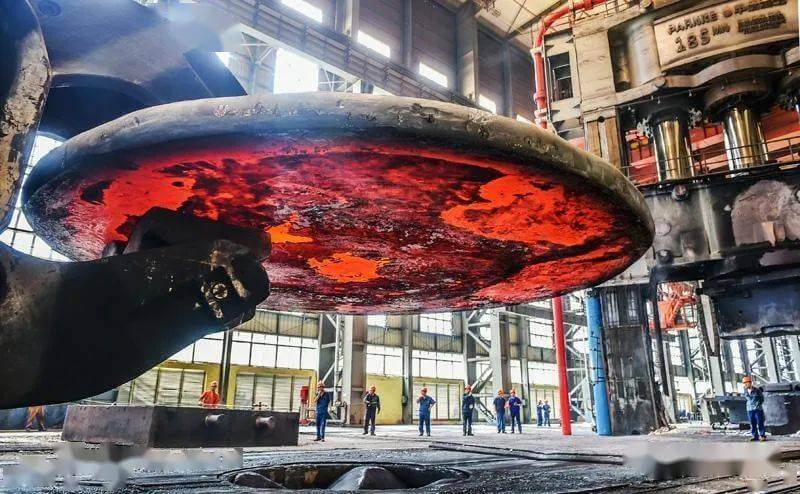
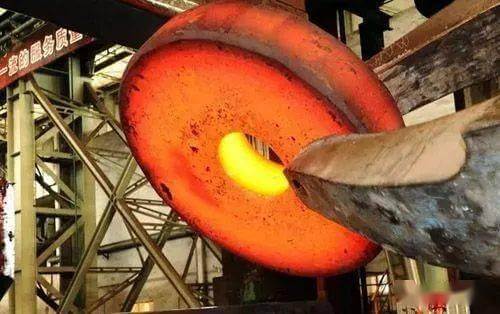
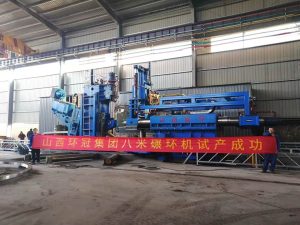
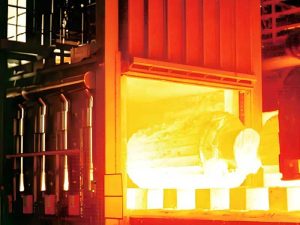
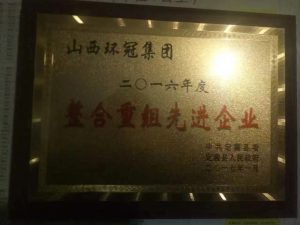
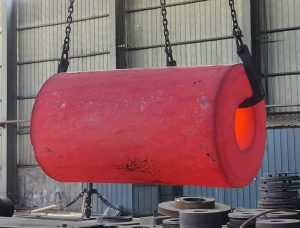


Hello!sign in